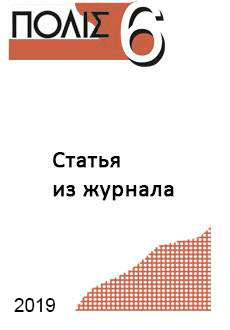Online shop of "Polis. Political Studies" Journal
We in the world, the world in us
Korgunyuk Yu.G. Cleavage Theory and Theory of Issue Dimensions: Cross-Points. – Polis. Political Studies. 2019. No. 6. P. 95-112. (In Russ.).
Free!
political parties, cleavage theory, issue dimensions theory, conflict dimensions, electoral cleavages, political cleavages, Russia, Germany.
The article analyzes drawbacks of the methodology behind the project “Manifesto”, which make it reveal the structure of party documents over issue dimensions and political cleavages. These drawbacks are: its emphasis on issue salience instead of parties’ issue positions; bringing the content of party manifestos under broad categories formulated at the beginning of the project and little adapted to situations in non-Western countries; a somewhat inappropriate technique for factor analysis. An alternative methodology is proposed that shifts the focus to parties’ positions on issues which cause the biggest polarization. It also expands the range of studied documents at the expense of interviews and transcripts of debates, limits the study to a single election campaign, and makes adjustments to the procedure of factor analysis. As a result, it allows identification of the structure of issue dimensions, not of manifestos. In order to reveal political cleavages inside these dimensions, starting from so called electoral cleavages is proposed; these are detected by a factor analysis of the vote shares received by parties in different territorial units. Factor loadings of parties in the electoral space are compared through correlation analysis with their factor loadings in the political space; for more accurate results parties’ issue positions in separate issue domains are analyzed. The proposed methodology is applied to the analysis of the elections to the Russian State Duma (2016) and German Bundestag (2017). It revealed that the Russian political space is structured by three conflict dimensions: systemic, authoritarian-democratic, and socioeconomic; the German one, however, is structured by only two: systemic (GAL/TAN with dominance of the transnational cleavage) and socioeconomic. With all this, the electoral space of Russia is dominated by the authoritarian-democratic cleavage, whereas the second electoral cleavage has a combined nature (socioeconomic + systemic). In Germany, the first electoral cleavage is systemic while the second one is socioeconomic.
 English
English Русский
Русский

Reviews
There are no reviews yet.